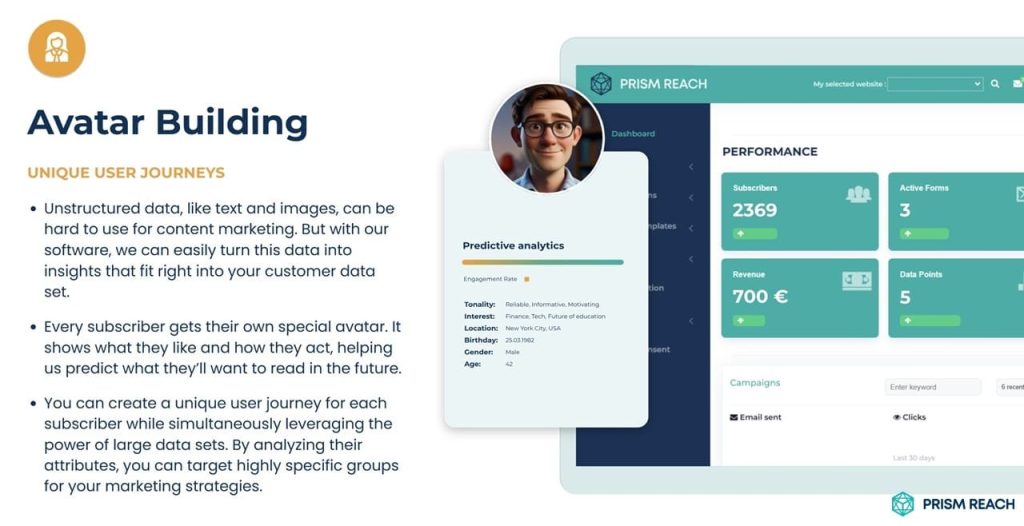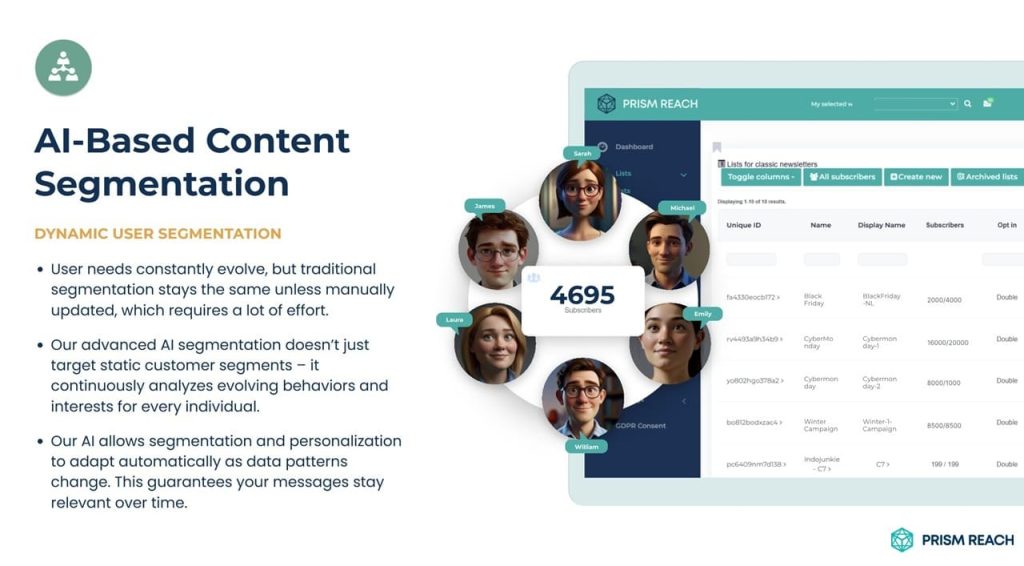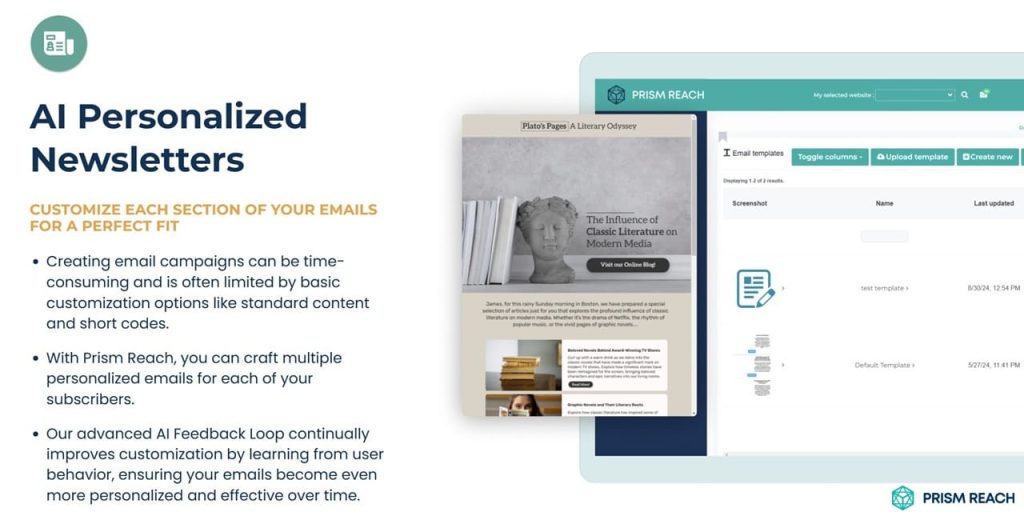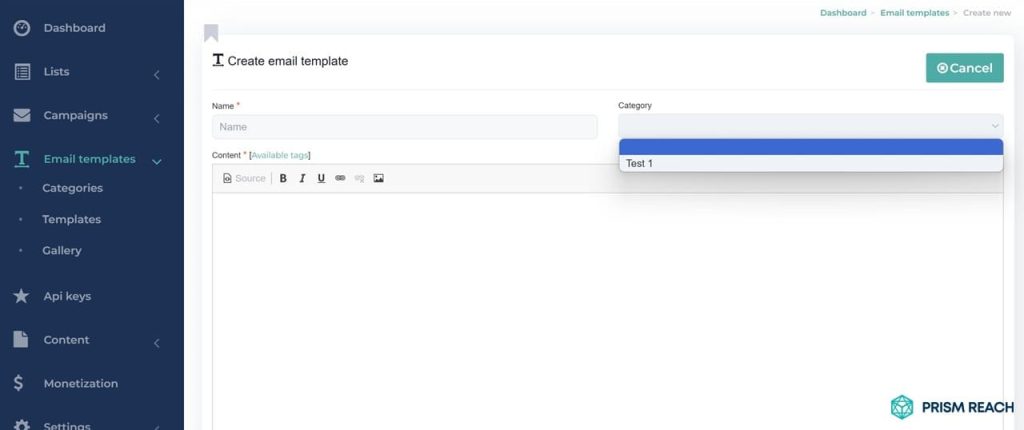In today’s digital landscape, e-commerce businesses are constantly seeking effective ways to connect with customers and drive sales. Email marketing remains a powerful tool in this quest, offering unparalleled opportunities for personalized engagement and conversion. However, with inboxes becoming increasingly crowded, it’s crucial to employ strategic approaches that yield tangible results.
The importance of email marketing in e-commerce cannot be overstated. As we navigate through economic uncertainties and shifting consumer behaviors, businesses need cost-effective, high-impact strategies to maintain growth. Email marketing, when executed correctly, offers just that – a direct line to customers that can be optimized for maximum return on investment.
Key Facts
- Effective e-commerce email marketing can yield an average ROI of $42 for every $1 spent, making it one of the most profitable digital marketing channels.
- Personalized email campaigns have been shown to increase open rates by up to 29% and click-through rates by 41% compared to non-personalized emails.
- Automated email workflows, such as abandoned cart reminders, can recover up to 15% of lost sales, significantly impacting an e-commerce business’s bottom line.
- Interactive email elements can boost engagement rates by encouraging subscribers to interact directly within the email.
- Augmented Reality (AR) in emails can enhance the shopping experience, leading to higher conversion rates by allowing customers to visualize products in their environment.
Upgrade Your Email Marketing with AI Personalization!
Strategies for E-commerce Email Marketing Success
To achieve real results from e-commerce email marketing, businesses must adopt a multi-faceted approach that combines personalization, automation, and strategic content delivery. The key lies in understanding your audience and leveraging data to create highly targeted campaigns that resonate with subscribers.
Segmentation: The Foundation of Personalization
Segmentation is the cornerstone of effective email marketing. By dividing your subscriber list based on factors such as purchase history, browsing behavior, and demographic information, you can tailor your messages to specific audience segments. This level of personalization significantly increases the relevance of your emails, leading to higher engagement rates.
Effective segmentation allows you to create targeted campaigns that speak directly to the interests and needs of different customer groups. For instance, you might create separate campaigns for first-time buyers, loyal customers, and those who haven’t made a purchase in a while. By analyzing customer data, you can identify patterns and preferences that inform your segmentation strategy.
This might include factors such as product categories of interest, average order value, or frequency of purchases. The more granular your segmentation, the more personalized and effective your emails can be. Remember, the goal is to make each subscriber feel as though the email was crafted specifically for them, increasing the likelihood of engagement and conversion.
Automation: Scaling Personalization
Automation plays a crucial role in scaling your email marketing efforts while maintaining personalization. Implementing automated workflows for welcome series, abandoned cart reminders, and post-purchase follow-ups ensures timely and relevant communication with your customers throughout their journey.
Automation allows you to create a series of pre-planned emails that are triggered by specific customer actions or time intervals. For example, a welcome series might include an initial thank you email, followed by a series of emails introducing your brand, products, and any special offers for new subscribers. Abandoned cart reminders can be set up to automatically send at predetermined intervals after a customer leaves items in their cart, potentially recovering lost sales.
Post-purchase follow-ups can include order confirmations, shipping updates, and requests for product reviews. By automating these processes, you ensure consistent communication with your customers without requiring manual intervention for each email. This not only saves time but also ensures that your customers receive the right message at the right time, enhancing their experience with your brand.
Content Strategy: Balancing Promotion and Value
Content is king in email marketing, and for e-commerce, this means striking a balance between promotional offers and valuable, informative content.
As noted by email marketing expert Val Geisler, “The most successful e-commerce emails don’t just sell products; they tell stories and build relationships with customers.”
This approach involves creating emails that go beyond mere product promotion. While sales and special offers are important, they should be balanced with content that provides value to the reader. This could include how-to guides related to your products, industry news and trends, or behind-the-scenes looks at your company. The key is to position your brand as a helpful resource, not just a seller. For example, a clothing retailer might send style guides or care instructions along with product promotions.
A tech company could share tips on getting the most out of their products or updates on the latest technological advancements. By providing this mix of promotional and valuable content, you keep your subscribers engaged and looking forward to your emails, rather than seeing them as mere advertisements.
Mobile Optimization: Catering to On-the-Go Consumers
Mobile optimization is non-negotiable in today’s mobile-first world. With over 60% of email opens occurring on mobile devices, ensuring your emails are responsive and easy to read on smaller screens is essential for maximizing engagement and conversions. Mobile optimization goes beyond just making your emails readable on a small screen.
It involves considering the entire mobile user experience. This includes using a single-column layout for easy scrolling, larger font sizes for readability, and touch-friendly buttons for calls-to-action. Images should be optimized to load quickly on mobile data connections, and alt text should be used in case images don’t load.
The subject line and preheader text should be concise and impactful, as mobile inboxes typically show fewer characters. Additionally, consider the context of mobile users – they might be on-the-go, multitasking, or have limited time. This means your content should be scannable and your main message should be clear and upfront. By prioritizing mobile optimization, you ensure that your emails are effective regardless of how your subscribers choose to access them, leading to higher engagement and conversion rates.
Advanced Strategies: Hidden Gems to Enhance Your Campaigns
Beyond the basics, several lesser-known strategies can significantly enhance the effectiveness of your email marketing campaigns. These hidden gems leverage innovative technologies and personalization techniques to create more engaging and impactful emails.
Interactive Email Elements
Incorporate interactive elements such as quizzes, polls, or mini-games directly into your emails. This engages subscribers and encourages them to spend more time with your content, which can boost engagement rates and provide valuable insights into their preferences. Interactive content can lead to higher click-through rates and a more memorable experience.
Augmented Reality (AR) Integration
Utilize augmented reality features in emails to allow customers to visualize products in their own environment. For example, a furniture retailer could let customers see how a piece of furniture looks in their home through AR. This immersive experience can significantly enhance the shopping experience and increase conversion rates by providing a tangible connection to your products.
Behavior-Triggered Automation
Set up automated email campaigns that trigger based on specific user actions, such as browsing a particular category or abandoning a cart. These timely, relevant emails can nudge customers toward making a purchase or re-engaging with your site, leading to higher conversion rates.
Gamification Strategies
Introduce gamification elements into your email campaigns, such as challenges or contests that encourage customer participation. For instance, fitness brands can send emails with weekly challenges that reward users for completing tasks, fostering engagement and community while driving sales.
Predictive Analytics for Targeted Campaigns
Employ predictive analytics to forecast future purchasing behavior based on past interactions. By understanding when a customer is likely to make their next purchase, you can send targeted offers or reminders at the optimal time, enhancing the chances of conversion.
Revolutionize Your Email Marketing with Prism Reach
While the strategies mentioned above form the foundation of successful e-commerce email marketing, leveraging advanced AI-powered solutions like Prism Reach can take your efforts to the next level. Prism Reach’s sophisticated AI algorithms offer deep personalization capabilities that can significantly enhance the effectiveness of your email campaigns.
Prism Reach’s proprietary AI technology clusters content and creates detailed user avatars, enabling hyper-personalized newsletters that consider factors like location, engagement history, and predicted interests. This level of customization ensures that each subscriber receives content that’s not just relevant, but truly engaging.



Key Benefits of Prism Reach
- AI-Powered Send Time Optimization: Uses AI to determine the optimal send times based on subscriber behavior, ensuring your emails reach recipients when they’re most likely to engage.
- Time Zone Segmentation: Automatically segments and schedules emails based on subscriber time zones, eliminating the guesswork and ensuring timely delivery across different regions.
- Engagement Analytics: Provides detailed insights into engagement patterns, helping you understand when your audience is most active and responsive.
- Personalized User Avatars: Creates comprehensive profiles for each subscriber, allowing for highly tailored email content and send times.
- Dynamic Content Scheduling: Adjusts send times dynamically based on real-time data and changing subscriber behaviors, maintaining optimal engagement continuously.
With features like AI-generated send time suggestions, automated time zone segmentation, and comprehensive engagement analytics, Prism Reach offers a comprehensive toolkit for modern email marketers looking to maximize their campaign effectiveness.
Seamless Integration and User Experience
Prism Reach offers a seamless setup and integration process, allowing marketers to get started quickly and efficiently. Its user-friendly interface includes drag-and-drop editors, pre-designed templates, and AI-enhanced sign-up forms that increase sign-up rates and improve GDPR compliance.

Advanced Analytics and Reporting
The platform provides in-depth analytics and reporting features, enabling marketers to track key metrics such as open rates, click-through rates, and conversion rates. With tools like sentiment analysis and churn prediction, Prism Reach offers valuable insights to continuously optimize email campaigns.

Collaboration and Support
Prism Reach fosters team collaboration with features like role-based access controls and multi-language support. Additionally, its integrated customer support chat and comprehensive API documentation ensure that users have the resources they need to succeed.
Benefits of Prism Reach
- Increased Engagement: Publishers report up to 40% higher engagement rates due to the personalized nature of the content. By tailoring send times to when each subscriber is most active, Prism Reach ensures that your emails are seen and interacted with more frequently.
- Higher Revenue: Tailored advertising and efficient content targeting lead to higher monetization rates for published newsletters. Prism Reach’s dynamic content selection ensures that each email contains the most relevant offers and information, driving better conversion rates.
- Improved Productivity: Automation and AI-driven insights significantly reduce the time required to create and manage campaigns. With features like automated workflow setup and AI-generated content suggestions, marketers can focus more on strategy and less on manual tasks.
- Enhanced Personalization: Prism Reach’s user avatars and detailed subscriber profiles allow for highly personalized email content, fostering stronger connections with your audience.
- Comprehensive Analytics: Detailed engagement analytics provide actionable insights, enabling continuous optimization of email strategies for maximum effectiveness.
Prism Reach not only optimizes send times but also enhances the overall email marketing strategy by providing tools that cater to personalization, automation, and analytics. This holistic approach ensures that your email campaigns are not only timely but also highly relevant and engaging to each subscriber.
Upgrade Your Email Marketing with AI Personalization!
FAQ
Conclusion
Achieving real results from e-commerce email marketing requires a strategic approach that combines personalization, automation, and data-driven decision-making. By implementing these best practices and leveraging advanced tools like Prism Reach, e-commerce businesses can create email campaigns that not only drive sales but also foster long-term customer relationships.
As the e-commerce landscape continues to evolve, those who master the art and science of email marketing will be well-positioned to thrive. Remember, the goal is not just to reach your customers’ inboxes, but to create meaningful interactions that drive engagement, loyalty, and ultimately, business growth.
Sources
- WomenTech. (n.d.). Innovative Email Marketing Tactics. Retrieved from WomenTech
- Gameball. (n.d.). 13 Examples of E-commerce Email Flows for Better Sales & Loyalty. Retrieved from Gameball
- Sender. (n.d.). E-commerce Email Marketing Strategies. Retrieved from Sender
- BigCommerce. (n.d.). Ultimate Guide to Email Marketing for E-commerce. Retrieved from BigCommerce
- WP Mail SMTP. (n.d.). E-commerce Email Marketing Strategies. Retrieved from WP Mail SMTP
- LinkedIn. (n.d.). Effective Email Marketing Strategies for E-commerce Brands. Retrieved from LinkedIn